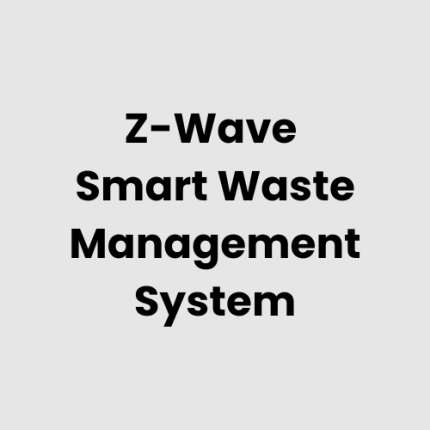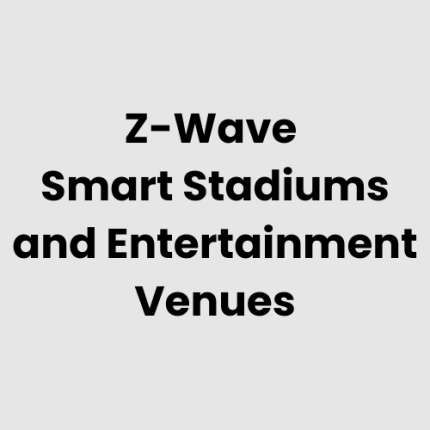Description
Z-Wave Enabled Smart Airports System
Technical Architecture of Z-Wave Enabled Smart Airports System
Z-Wave Enabled Smart Airports integrate IoT devices to optimize airport operations. The architecture features:
- Edge Devices: Sensors and actuators for security, environmental monitoring, and passenger assistance.
- Gateways: Z-Wave hubs connect sensors to centralized systems.
- Local Servers: On-site servers for processing and data storage.
- Cloud Integration: Enables advanced analytics, remote monitoring, and predictive maintenance.
- Interfaces: APIs for integration with airport management systems, passenger apps, and security platforms.
List of Hardware for Z-Wave Enabled Smart Airports System
- Z-Wave environmental sensors (temperature, humidity, air quality).
- Security cameras with Z-Wave connectivity.
- Smart lighting and energy-efficient controls.
- Motion and occupancy sensors.
- Gate and baggage area actuators.
- Smart kiosks and wayfinding displays.
- Emergency systems (alarms, fire sensors).
- Gateways for Z-Wave communication.
- Local servers with redundancy capabilities.
- Power backup systems and surge protectors.
Physical Placement Considerations
- Sensors: Near high-traffic areas (security checkpoints, gates) for passenger monitoring.
- Cameras: Cover entry/exit points, baggage claim, and critical zones.
- Gateways: Centrally located to ensure uninterrupted Z-Wave communication.
- Environmental Monitors: Positioned in terminals, lounges, and aircraft bays.
- Emergency Devices: Strategically distributed to meet safety regulations.
- Smart Displays: Near boarding gates and information centers.
Hardware Architecture of Z-Wave Enabled Smart Airports System
The hardware architecture combines robust IoT devices with redundancy mechanisms for 24/7 operations:
- Central Hubs: Connect multiple Z-Wave networks across the airport.
- Data Processing Units: Handle real-time analytics and decision-making.
- Redundant Connectivity: Ensures uninterrupted operation via backup gateways.
- Integrated Power Systems: Energy-efficient devices reduce operational costs.
Deployment Considerations
- Scalability: Ensure hardware can support expanding operations.
- Interference Management: Avoid overlapping signals with other wireless systems.
- Regulatory Compliance: Adhere to aviation and cybersecurity standards.
- Maintenance Access: Devices should be easily accessible for updates and repairs.
- Integration: Seamless compatibility with existing airport infrastructure.
List of Relevant Industry Standards and Regulations
- International Air Transport Association (IATA) standards.
- Federal Aviation Administration (FAA) regulations.
- European Union Aviation Safety Agency (EASA) guidelines.
- IEEE standards for IoT and wireless communication.
- ISO 27001 for cybersecurity.
- National Institute of Standards and Technology (NIST) cybersecurity framework.
- Health and safety standards for passenger environments.
Local Server Version
The local server version of Z-Wave Enabled Smart Airports provides robust offline capabilities:
- On-premises data processing for time-sensitive operations.
- Secure storage for compliance with local regulations.
- Minimal latency for real-time monitoring and control.
- Redundant backup systems to ensure resilience.
Cloud Integration and Data Management
Cloud integration enhances Z-Wave Enabled Smart Airports by enabling:
- Advanced Analytics: Use machine learning to optimize passenger flow and energy consumption.
- Remote Management: Monitor airport systems from anywhere.
- Data Centralization: Unified storage for seamless collaboration across departments.
- Predictive Maintenance: AI-driven alerts to prevent equipment failures.
GAO Tek’s expertise ensures secure and efficient cloud integration, backed by stringent data protection measures.
GAO Case Studies
USA
- Atlanta, Georgia
A major airport implemented Z-Wave sensors for real-time monitoring of air quality and passenger occupancy. This improved indoor air management and enabled better resource allocation. GAO Tek supported the integration with the airport’s existing infrastructure, ensuring minimal disruption during deployment. - Dallas, Texas
Z-Wave IoT devices were deployed in the baggage handling area, streamlining operations and reducing delays. The system integrated automated alerts for mishandled luggage, demonstrating how GAO Tek’s technologies enhance operational efficiency. - Los Angeles, California
A project focused on energy conservation used Z-Wave-enabled lighting systems across terminals. Motion sensors reduced energy waste by optimizing lighting schedules. GAO Tek facilitated the deployment with expert technical guidance. - Denver, Colorado
Smart kiosks with Z-Wave communication features were installed to improve passenger self-service. These devices provided seamless integration with the airport’s management systems, showcasing GAO Tek’s ability to enhance passenger satisfaction. - Chicago, Illinois
The airport adopted Z-Wave-enabled environmental sensors to monitor runway conditions in real time. This enhanced safety during inclement weather, supported by GAO Tek’s robust hardware solutions. - Orlando, Florida
A pilot program equipped passenger lounges with Z-Wave smart displays for real-time flight updates and announcements. GAO Tek helped implement the technology, improving passenger engagement. - New York City, New York
A major international airport installed Z-Wave motion sensors to optimize security checkpoints. The system reduced wait times and enhanced passenger flow. GAO Tek played a key role in providing technical expertise for this advanced solution. - Phoenix, Arizona
An airport partnered with GAO Tek to deploy Z-Wave-enabled energy management systems, reducing energy consumption in parking structures. The initiative demonstrated significant cost savings. - Seattle, Washington
Z-Wave-enabled emergency response systems were deployed, ensuring rapid communication during crises. GAO Tek ensured the system’s compliance with industry standards. - Houston, Texas
The deployment of smart Z-Wave environmental sensors in cargo facilities improved temperature and humidity tracking for sensitive shipments. GAO Tek’s solutions ensured seamless integration with warehouse management systems. - Miami, Florida
Z-Wave sensors were installed in terminals to monitor passenger density and optimize space utilization. GAO Tek helped implement this solution, enhancing the passenger experience. - Boston, Massachusetts
A Z-Wave-enabled lighting control system was deployed in the runways to enhance energy efficiency. GAO Tek provided customized hardware and system configuration. - Las Vegas, Nevada
Smart wayfinding displays equipped with Z-Wave technology were installed to guide passengers through terminals. GAO Tek’s team ensured smooth installation and integration with existing systems. - Charlotte, North Carolina
The airport adopted a Z-Wave-enabled baggage tracking system to improve luggage handling accuracy. GAO Tek’s expert support was instrumental in its success. - Salt Lake City, Utah
Real-time monitoring of airfield operations was enhanced using Z-Wave-enabled sensors for weather and traffic data collection. GAO Tek provided reliable hardware and ongoing system support.
Canadian
- Toronto, Ontario
A large airport introduced Z-Wave-enabled security systems for real-time surveillance and access control. GAO Tek’s expertise ensured a smooth integration with existing security protocols, enhancing overall safety.
- Vancouver, British Columbia
The airport utilized Z-Wave IoT devices for energy-efficient terminal operations. Smart lighting and HVAC systems reduced energy consumption significantly, with GAO Tek providing end-to-end implementation and support.
Navigation Menu for Z-Wave
- Z- Wave Gateways/Hubs
- Z-Wave End Devices
- Z-Wave-Cloud, Server, PC& Mobile System
- Z-Wave Accessories
- Z-Wave Resources
Navigation Menu for IoT
Our products are in stock and can be shipped anywhere in the continental U.S. or Canada from our local warehouse. For any further information, please fill out this form or email us.
We are actively looking for partners who are like us located in the U.S. and Canada. For more information on partnering with GAO, please visit Partner with GAO Tek Inc. It lists various ways to partner with GAO, such as OEM Partnerships, Technology Integration, Distribution and Reselling Opportunities, Presenting at the Leading Event Tek Summit, Joint R&D Projects, Training and Consulting Services, Industry-Specific Collaborations, Research and Academic Partnerships.



